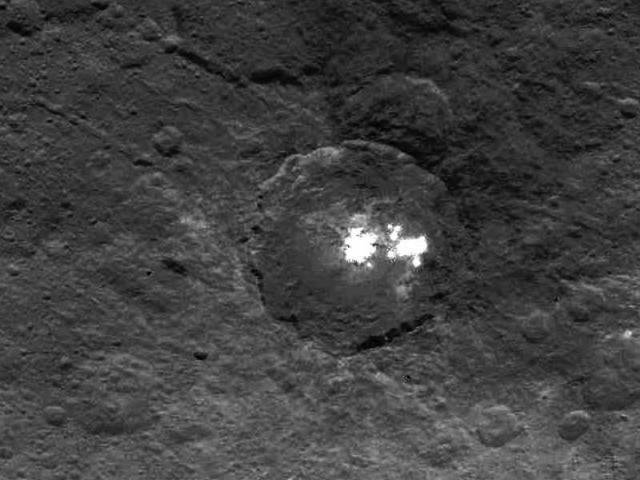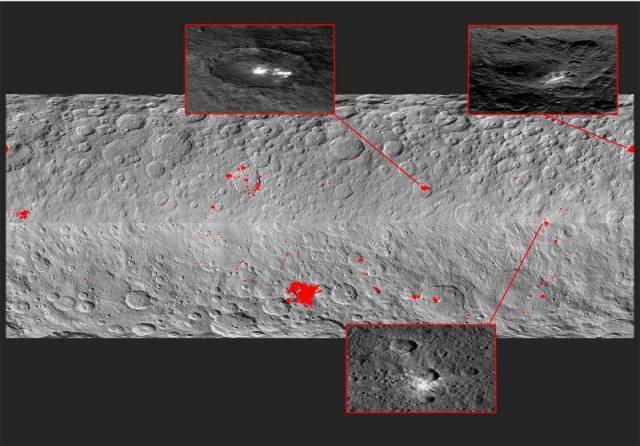Astronomers have finally found from what the mysterious bright spots on Ceres are made of. Take a look at the video…
Top image:False color image of Occator crater, home of the brightest spot on Ceres. Credit NASA/JPL-Caltech/UCLA/MPS/DLR/IDA
Now, in a paper published in Nature, the Dawn team explains that they have indications that the brightest spots, located in Occator crater, contain a salt called magnesium sulfate.
The dwarf planet Ceres, the largest object in the main asteroid belt1 with a mean diameter of about 950 kilometres, is located at a mean distance from the Sun of about 2.8 astronomical units (one astronomical unit is the Earth–Sun distance). Thermal evolution models suggest that it is a differentiated body with potential geological activity2, 3. Unlike on the icy satellites of Jupiter and Saturn, where tidal forces are responsible for spewing briny water into space, no tidal forces are acting on Ceres. In the absence of such forces, most objects in the main asteroid belt are expected to be geologically inert.
Mosaic of Ceres’ surface, with 130 bright spots shown in red. Three zooms provide closer looks at some of the regions. Occator crater (top left zoom) and Oxo crater (top right zoom) are the two brightest regions on Ceres, and the only craters where we’ve found afternoon haze. At the bottom, a more typical crater without haze or evidence for water is shown. Credit: NASA/JPL-Caltech/UCLA/MPS/DLR/IDA
Geologist Carol Raymond from the Dawn team told Popular Science in an email:
“The high reflectance of the bright material in Occator crater… is a strong indication that those deposits are young and indicate active geologic processes at Ceres. This is a fascinating possibility and the team is eagerly mapping the geology and morphology of the surface and analyzing the spectral data to characterize these processes.”
via Popsci







Leave A Comment